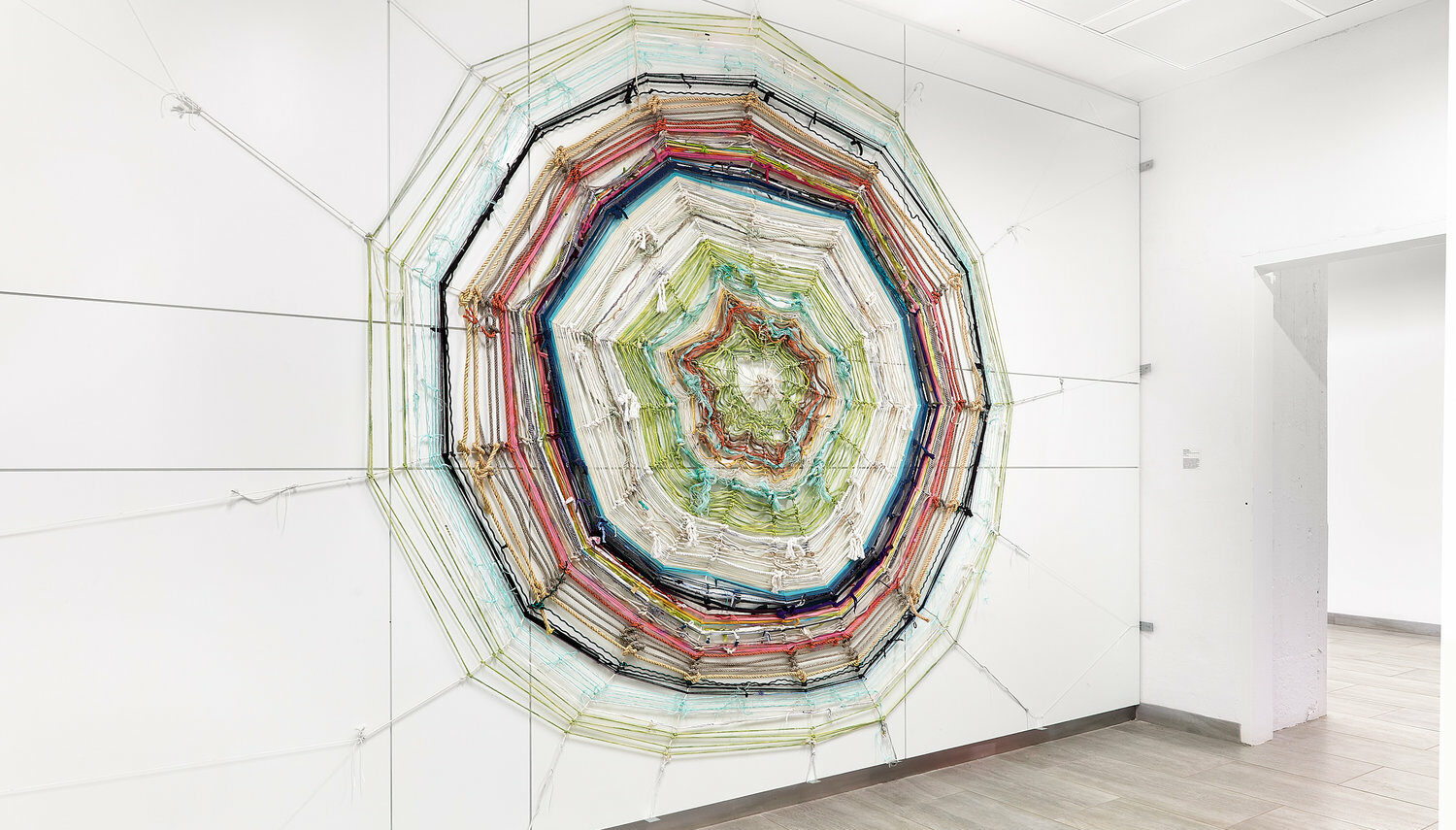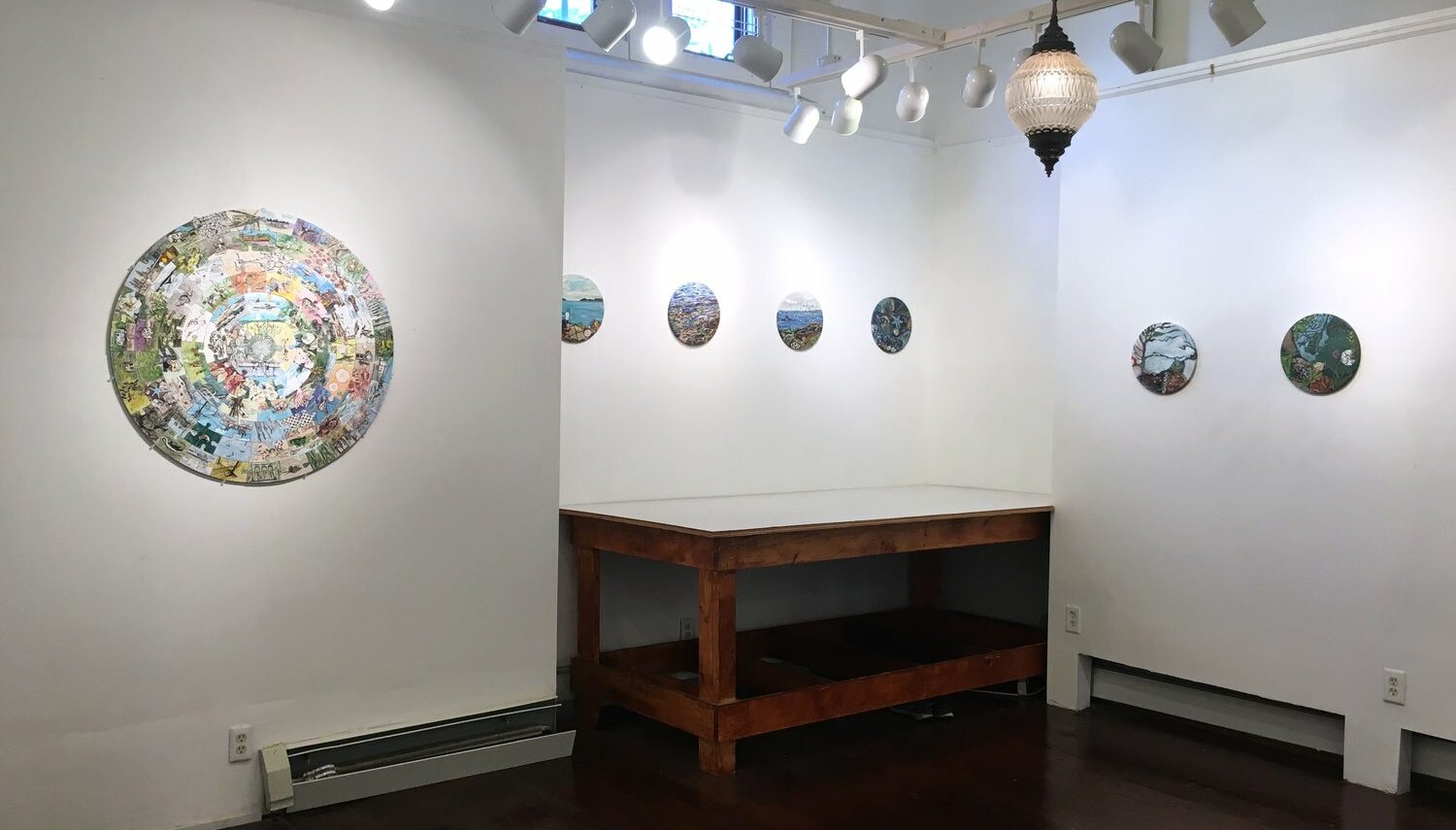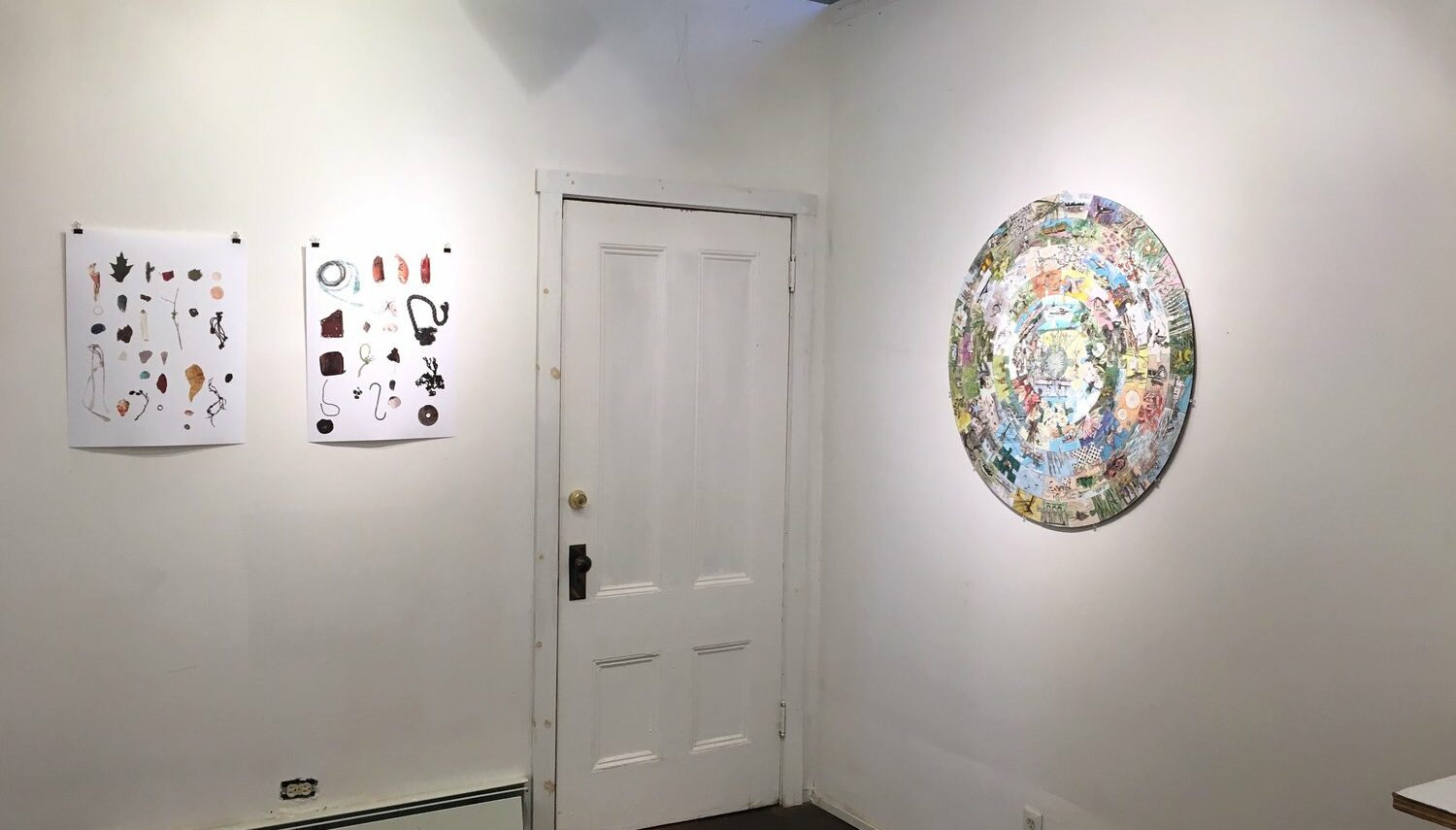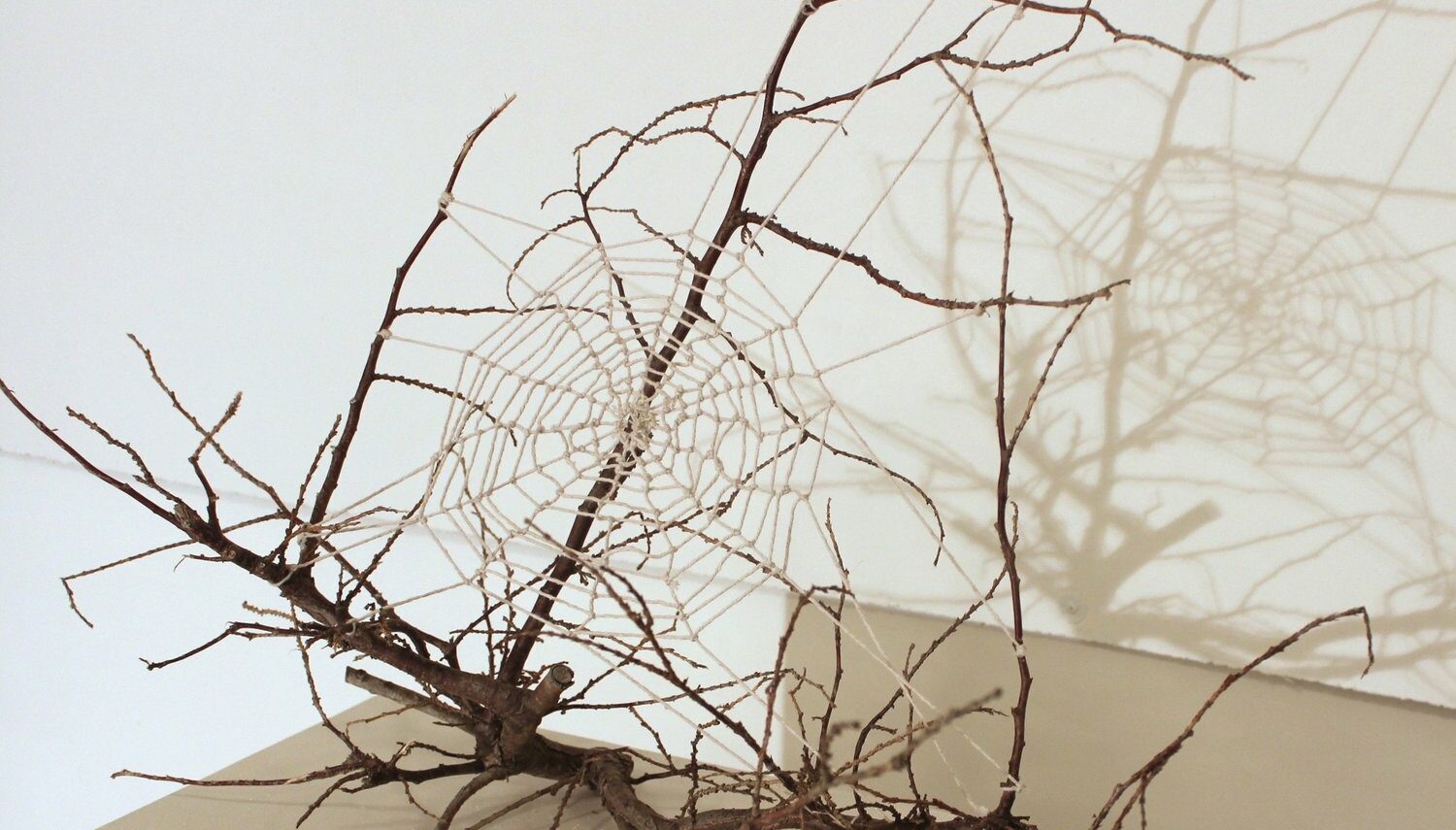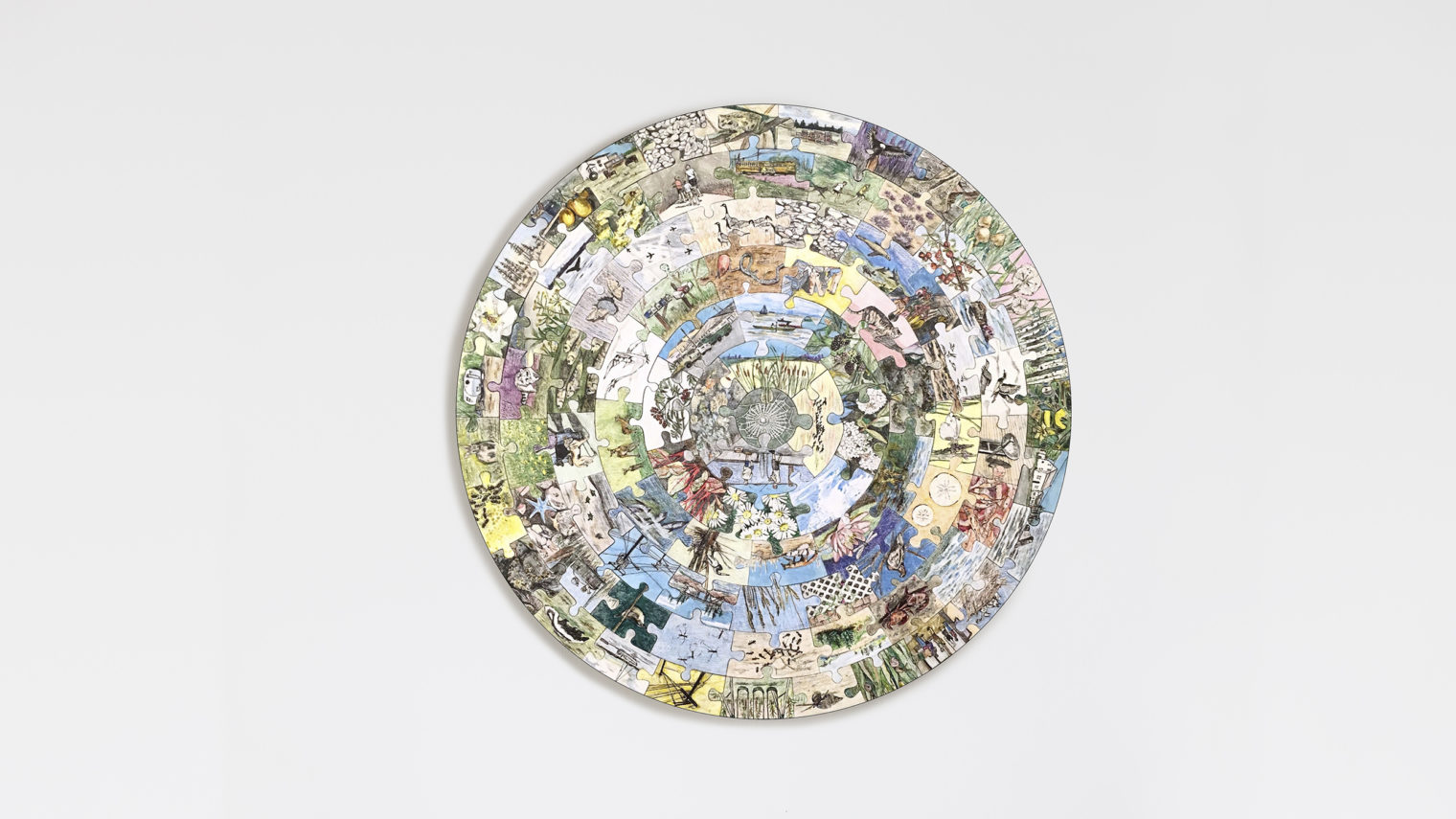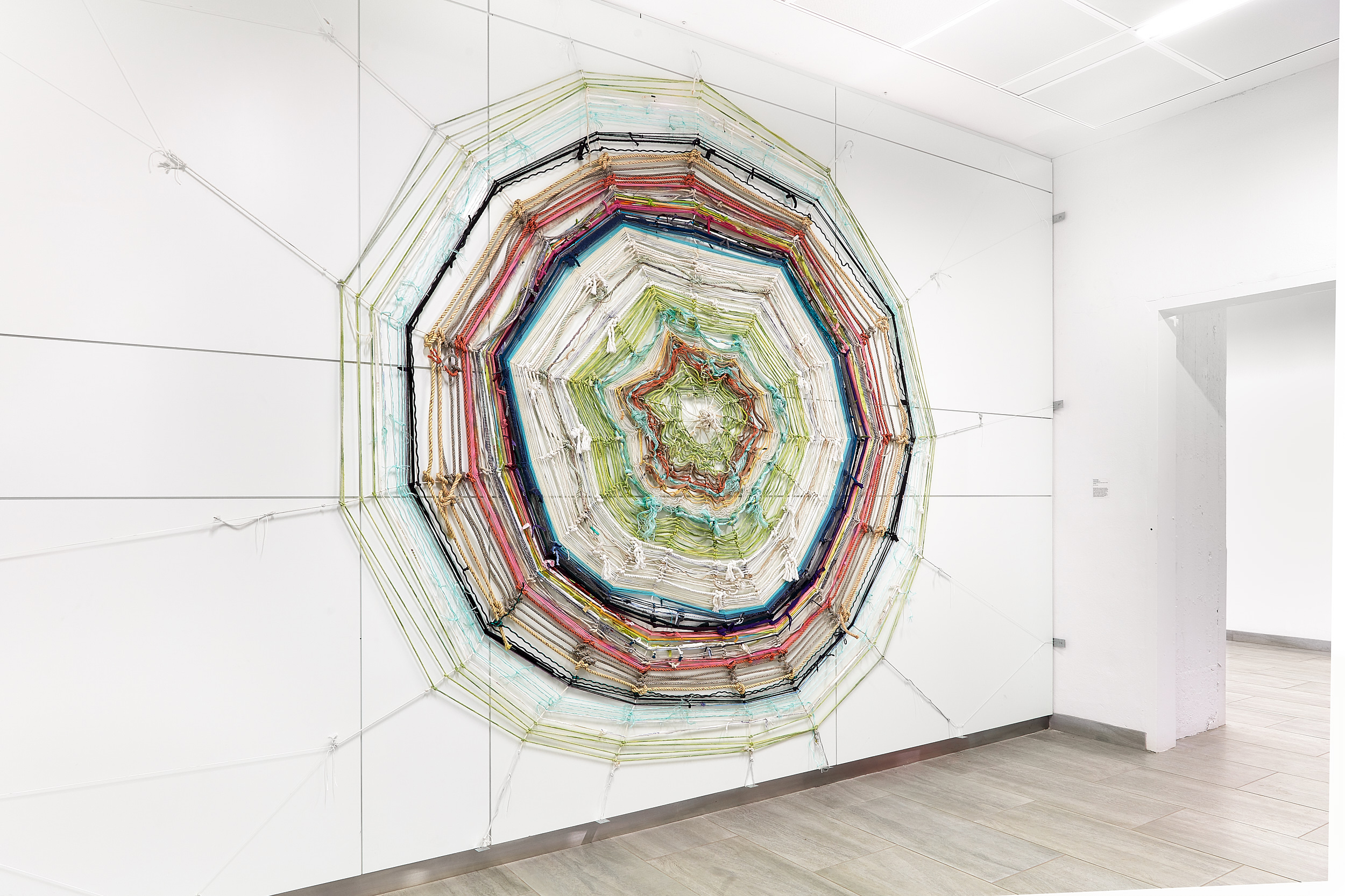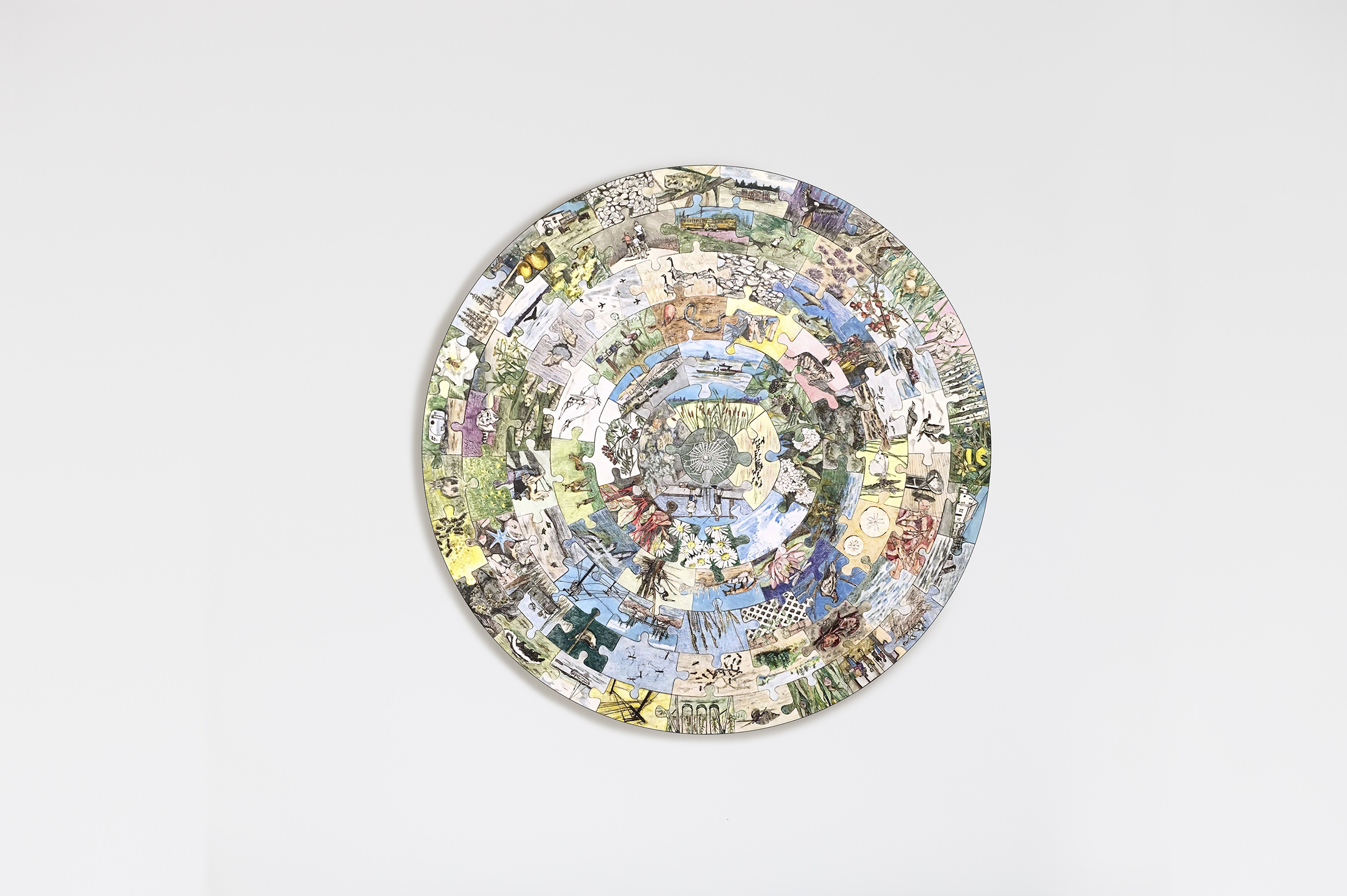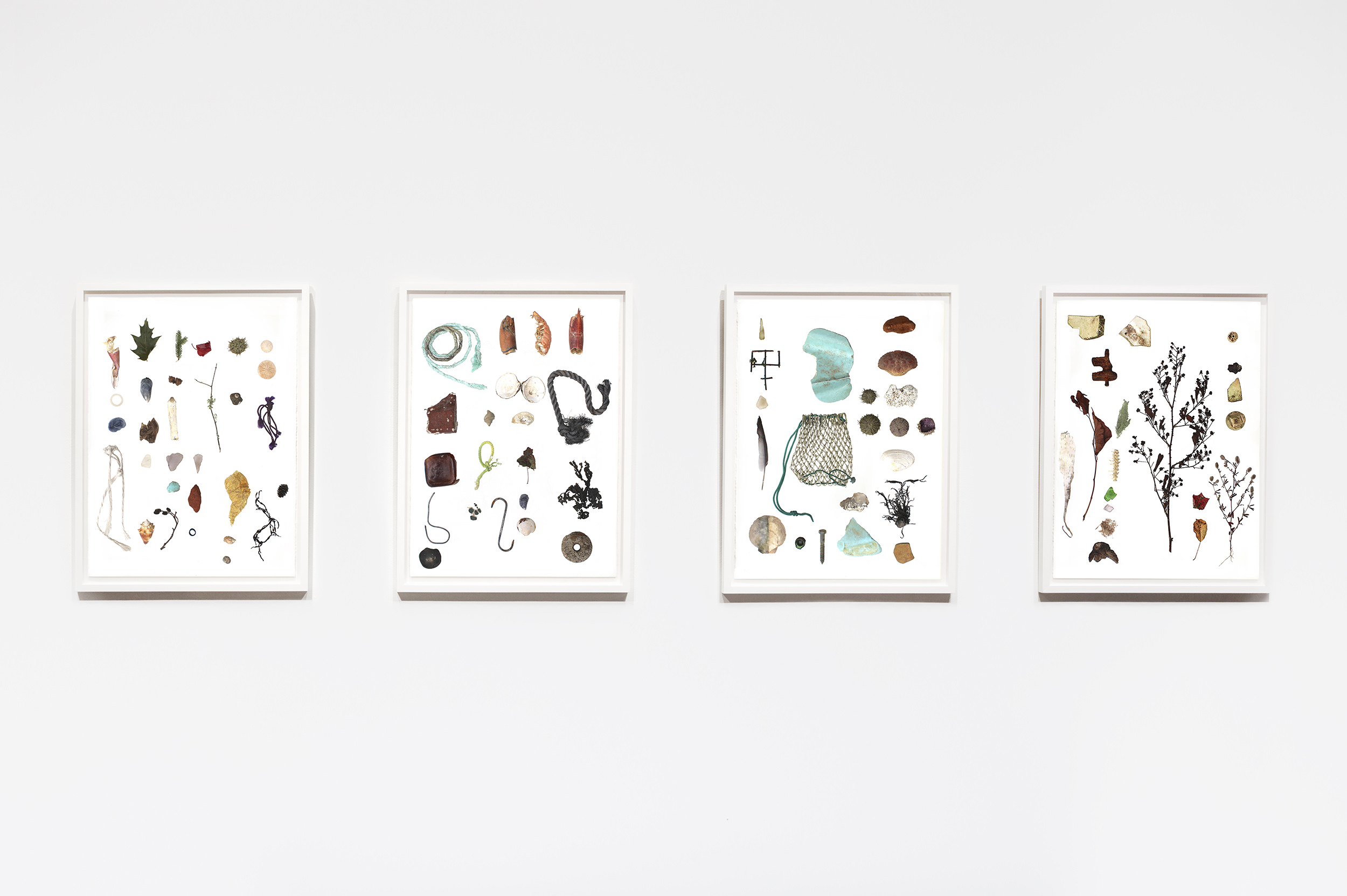“Each of the 91 wood pieces is a tiny drawing in graphite, ink, or colored pencil of something she has seen—bald eagles, whales, grasslands, oceans, forests, and local folks around town. All these images connect to form the spirit of Eastport.”
— Deborah Fallows, The Atlantic
Land, Sea, Air
Land, Sea, Air is a collection of site-specific paintings, drawings, weavings, and sculptures that respond to the coastal region of Eastport, ME. Though these works derive from sites and experiences within this small city, the themes addressed are relevant to any environment. Located in the Eastern-most part of the United States, this city acts a microcosm for sustainable living and ecological responsibility. Community members are highly dependent on the ocean and soil to provide food and resources. Locals also rely heavily on skill sharing, collaboration, and trade to live remotely. Eastport’s interdependent social and ecological relationships inspired this series of works uniting land, sea, and air.
At one glance, it is possible to witness a deer, a flock of geese, a breaching whale and some crabs scattering along the shore. In Eastport, aquatic and animal life is abundant and flourishing, which is rare to find near urban areas. Land, Sea, Air responds to the bountiful resources and local biodiversity to examine a community that prioritizes ecological balance. Works in exhibition include a puzzle project containing 91 small drawings, 13 mixed-media paintings, 3 digital prints, and 2 woven textiles influenced by the North-East Coastal shores.
The land, sea, and air swirls as one connected system, nourishing all inhabitants in cycles of life, which is evidenced in Ecosystems, a series of paintings bound together by string forming a network of habitats and organisms. Biological abundance is also pictured in Land-Sea-Air, a modular puzzle connecting dozens of species from surrounding prairies, forests, and tides. Traces of human existence are documented in a series of photographs, titled Objects of Land and Sea, which archives man-made materials scattered in tides and along shorelines.
A part of this collection is a site-specific community engagement project: Community Web is a grass roots, beach clean-up and donation-based, weaving project designed to form a web of life inspired by the local community. This work culminates in a giant web revealing materials from numerous participants, which symbolize a diversity of tight-knit connectedness within a single community.
“Richelle made meaningful connections in the Eastport community and worked with materials given to her to create a place-based series of works. She is dedicated to exploring ecology and traveling to new environments as a part of her artistic process.”
— Kristin McKinlay, Director, Tides Institute & Museum of Art
